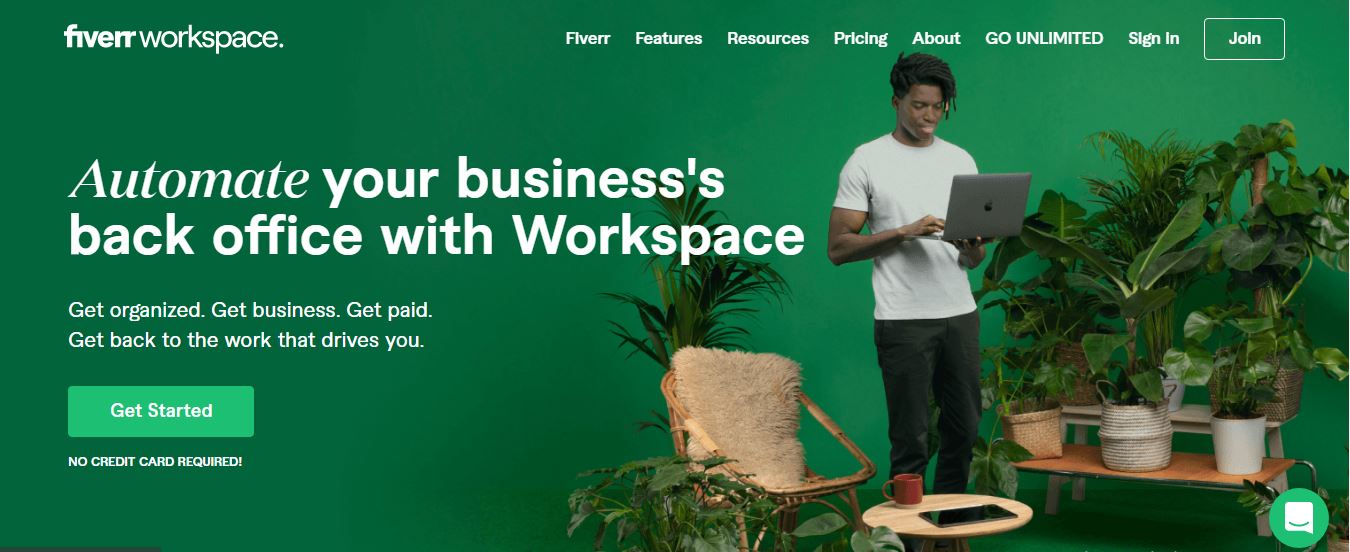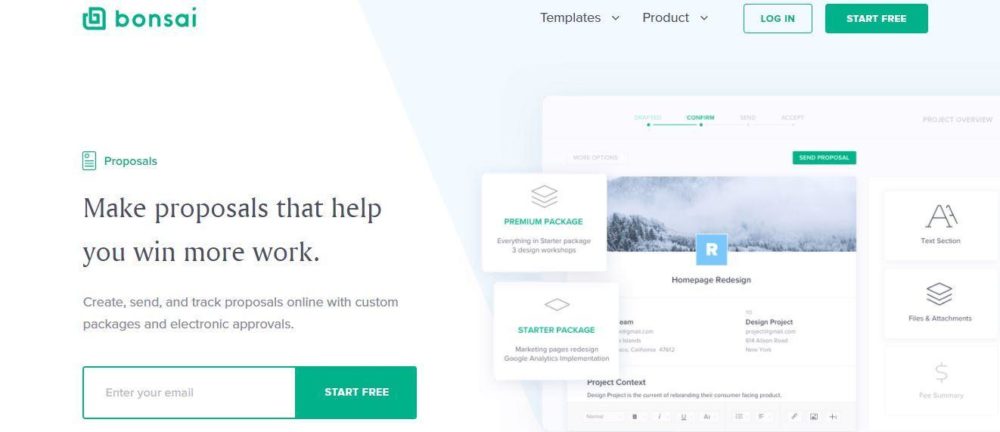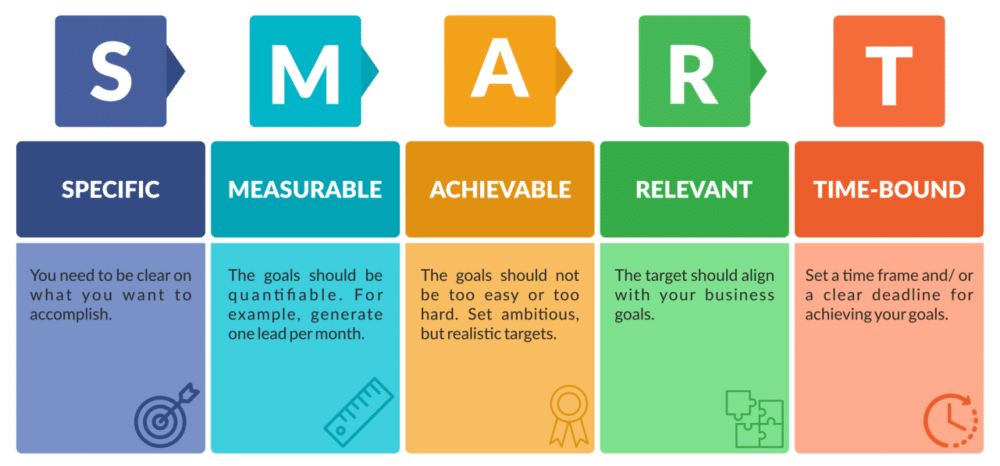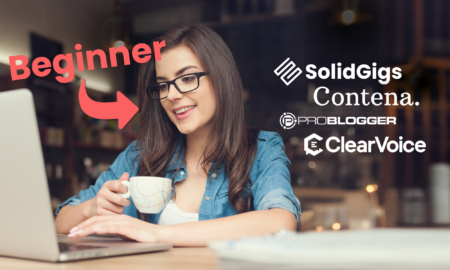Are you trying to start your own graphic design business? If you are, here’s a little secret: you’re going to need more than just experience and an outstanding portfolio to land a design job from a new client. Landing gigs also means you’re going to need a standout graphic design proposal, too.
It doesn’t matter if you’re a newbie or a seasoned graphic designer, the graphic design industry is competitive and a bit shrouded in mystery, especially for people who can’t tell the difference between an Illustrator, a Graphic designer, and a UI/UX designer.
A graphic design proposal explains your value proposition and convinces the client why you are the best fit for the job, even if you’re looking for an agency job, an in-house position, or a freelance gig.
Whether you’re into graphic design to start an online business or just putting your creativity to work, a graphic design proposal lands you a design job with relative ease. That said, how do you go about drafting the perfect graphic design proposal? I’ll be teaching you all that and more in this article. Let’s get cracking!
Money Note: If an extra $1K–$5K/month would change your 2026 goals (debt, savings, travel, freedom), you’ll want to catch this: free live workshop from a freelancer who’s earned $4M+ online. No fluff. No gimmicks. A real roadmap. 👉 Watch the training or save your seat here »
What is a graphic design proposal?
A graphic design proposal is a document that sells your value proposition to a client.
It summarizes everything you can offer regarding a new design project. It also includes proof of your previous work — otherwise known as your portfolio — and the costs that you think you’ll incur while doing the project.
However, a graphic design proposal is not a sales pitch.
When we say “sales pitch,” we’re referring to a verbal attempt to sell your services to a client. Yes, it requires a mastery of its own, but it’s only the second step in the bidding process. Creating a graphic design proposal comes first.
So, technically speaking, you can say a graphic design proposal is a hard-copy sales pitch sent after you’ve discussed with a client, not before. This means your proposal must be top-notch, convincing, and engaging from the first page to get the client to the negotiation table.
Why is a graphic design proposal important?
A Facebook page called “Clients From Hell” shares horror stories from freelancers and creatives. Many of these stories feature some sort of client claiming that they shouldn’t be paying for services that they believe don’t require any real talent.
While clients like these are fortunately in the minority, many clients will balk at your price as a freelancer until you show them what you can do.
Unlike digital marketers or data analysts who quantify their claims with charts and statistics, the game’s different for us designers. You need visual proof that shows you understand and can deliver what the client expects. A graphic design proposal showcases your previous works and gives your clients an idea of what you can do for their business.
As a graphic designer, your proposal must answer these questions to a client’s design project:
- What does your project intend to do? Talk about the design project’s problems, goals, and objectives.
- How can you help the client? Explain your proposed solution.
- Why are you the best fit for this project? Show your portfolio.
- What will it take to do this project?: Outline your expected costs, including any work you expect to outsource to others.
- What can your client expect?: — Finish up with the deliverables, including the timeline for each item.
As you create your proposal, you need to keep in mind that you’re not the only one who can do the job. This is why you need to add your touch to the proposal and showcase what makes your designs unique.
Defining your unique selling proposition as a creative worker helps you stand out as a graphic designer and opens you to a whole new world of opportunities.
Now we have that out of the way, let’s look at how you can draft a winning graphic design proposal that reflects your value as a designer.
How to put together a graphic design proposal in 8 steps
Clients ask for proposals. Not because they don’t trust you can do it, but because they want to compare, and your proposal might be all that breaks or makes the deal.
Hence, to ensure that you’re not missing the critical bit of a proposal, you must have a custom freelance design proposal template you can whip out when the need arises.
You have to understand that other designers are a competition. So your job is to communicate (with your proposal, of course) why you’re a better hire for their business, even though you might be way expensive.
It shows you understand the project in question and have the confidence and expertise required to execute the job flawlessly.
Below, I’ll cover the steps you need to draft a graphic design proposal. Read on.
1. Discuss every detail of the project with your client
Your proposal should never come as a surprise to your client. Before you send a proposal, you’ll want to discuss every detail of their project beforehand. It’s a collaboration, which means you’ll need to know where to come in and use your design expertise to tackle the problem.
While designers used to discuss projects with their clients face-to-face, it’s not practical at this point. Instead, you may email the client to ask for more information, then set up a video call where you can discuss their requirements.
The key to great project calls is to be prepared to go over each detail of the project and listen actively.

2. Do proper research
If all goes well with your client call, you’ll hopefully get their go-ahead to send a proposal. To allow you to send a proposal that meets their requirements, you need to do intensive research on the potential client and their needs.
You must find out more information on your own to understand everything about this prospect’s brand, services, or products. Ask for any branded materials or documents that shed light on the situation and get to work.
You can also research their competitors to see how they stack against the prospect’s brand. Analyzing information from their social media and how effectively they compete in their industry can be invaluable as you put together a proposal.
Proper research helps you know what you’re going into, so you don’t underestimate yourself and the services you hope to offer. And, at the same time, it gives you a glimpse into the scope of the project and the amount of time and effort you’ll put into it.
3. Determine the proposal software you’ll use.
When your research is done, the next step is to get your proposal started. But you don’t need to reinvent the wheel.
Thankfully, there are different freelance tools that can help you create a terrific graphic design proposal quickly and easily. While most of these tools offer paid plans you’d pay monthly or annually, some offer freemium services such as invoicing.
However, to get the most features when drafting your graphic design proposal, you might want to consider a paid version. Here are some software tools to help you get started:
Fiverr Workspace
Fiverr Workspace offers an efficient suite of smart and seamless freelancer tools. It has all the essential features that help you with invoicing, customized proposals, contracts, and more.
What’s more, it is easy to set up and use in just a few clicks. Plus, if you’ll need a legally binding contract along the way, Fiverr Workspace allows you to embed the Standard Freelance Contract from the Freelancers Union with one click.
Other features include:
- Automatic reminders
- Smart alerts
- E-signatures
- Automatic invoices, and much more.
Fiverr Workspace is also free to sign up for and doesn’t charge you for standard contracts if you’ve got just one client. This makes it perfect for first-time freelancers.
HoneyBook
HoneyBook is multipurpose software that integrates CRM, proposal creation, project tracking, and automated workflows in one package. It works as an all-in-one management platform for several different small businesses.

If you’re not keen on using complex proposal creation tools, then HoneyBook’s easy-to-use interface might be what you need. It has tons of basic options to create a graphic design proposal without requiring any HTML coding knowledge.
All you need to do is create sections and move blocks around those sections for each part of your proposal. These blocks let you add images, text, and other handy options to your proposal. Creating proposals doesn’t get any easier than this!
Bonsai
Bonsai is a valuable automation suite for freelancers. It automates your entire work process as a freelancer, from proposal creation to time tracking and tax preparation.
Bonsai’s proposal creation feature offers you multiple and flexible proposal templates you can customize for every client. The proposal package also lets you upsell services to your clients by allowing you to edit a previously-created proposal.
Along with these remarkable features, you can track when clients view your proposal and make scheduling decisions right away. The best thing about using these tools is that you’ll save a lot of time and energy that you could use for more useful activities.
4. Describe the problem
Remember when I said to do some proper research in step 2? Yes? Now is the time to put your research to use. Having a good grasp of the client’s problem gives you the following advantages:
I. It shows the client you fully understand their problem and that your solution will address their needs.
II. It gives you a framework for your proposal.
If you’ve done your homework, this should be a breeze. Be specific. Use relevant stats, data, figures to buttress your “problem statement.”
Here’s an example of a concise problem statement, stating a specific problem.
This example ticks the box when it comes to being concise. That way, there’s no room for ambiguity.
By stating the client’s problem in your own words, you show a thorough understanding of the issue being faced by the client. If done correctly, this section should help convince your prospect that you’re the right person for the job.
5. Address the main goals and objectives
This is where you give a situation appraisal by describing the goals and objectives (you’ve surmised from the research) of the problem. To stay on course, you must clearly understand what success looks like for the graphic design project by using SMART goals:
This framework serves as a jump-off point for measuring and assessing your goals. You might even score bonus points if you assess the situation from another angle that the client didn’t think of. Aim for something short — two, three paragraphs at most. After this, move on to proposing a solution.
6. Provide your solution + next steps/deliverables
The solution strategy section is the core of your graphic design proposal. Think of it as the key to your client’s conversion. If your client got this far, surely, they’re interested in what you have to offer. Don’t disappoint them.
How do you write a solution section that will bring you closer to landing the job? You can follow the outline below:
- A detailed plan of action that describes the steps to achieving the solution.
- Hard facts, data, and statistics that back up the proposed course of action.
- Consistent and defined opportunities to assess the solutions you proposed. In other words, you are providing a feedback mechanism for your client.
I’m not saying other sections of your graphic design proposal are not as important, but this is the meat of it. When it comes to deliverables, do not leave room for imagination. You must visually communicate by explaining what goes on behind the scenes. For example, you can include initial sketches, design revisions, and mood boarding.
This is also where you incorporate your portfolio into the proposal, with the relevant pieces.
For instance, if you’re trying to land a book design project, include previous book designs in your portfolio. Likewise, if you’re bidding for a print ad campaign, showcase previous print ads.
That said, for this section to be successful, all data, statistics, and outlined solutions must culminate into an actionable plan that tackles and benefits the client in the long term.
7. Outline the costs involved
Many designers aren’t comfortable setting their rates, possibly because they don’t know their worth. However, you should be careful not to sell yourself short if you already have a comprehensive portfolio.
I’ve found that asking for the client’s total budget for the project helps outline graphic design services’ costs. Many clients are skeptical about graphic design rates but can be flexible if you can assure them that your work is worth every penny.
Here are the steps you need to follow when you do pricing for a graphic design proposal:
1. Estimate the complexity and timeline of the design project. If you’re a seasoned graphic designer, you should be able to predict the number of hours you’ll need to complete specific types of deliverables.
2. Come up with an hourly rate based on your previous work, the industry standard, and the client’s budget.
3. Multiply the total number of estimated hours for the project by the hourly rate. This will form your initial costing.
4. Consider upselling your services for different project options.
You may plan to add a certain number of revisions or different image sizes for multiple platforms. You can also identify gaps in the client’s marketing using the research you performed earlier in the process. For instance, you can offer web design services if you feel that the current site needs a makeover.
8. Call to action — sign, deposit, etc.
After stating your case as the best person for the job, you’ll want to end the graphic design proposal with a solid call to action.
Give clear and specific instructions on the next steps and how to execute the agreement. These instructions help your prospect move to the next stage with ease.
If you created your graphic design proposal document on a PDF, embed PayPal buttons so clients can pay online. A tool like Fiverr Workspace allows your clients to attach e-signatures and enable invoice payments.
You may also promote yourself one last time by telling your prospect why they should hire you. This is less of a hard sell and more of sharing your excitement about working with clients and delivering what they need. This will end the proposal on a positive note.
Struggling to get better-paying clients as a freelance designer? Then, check out this next section to see how to use all the tips we’ve discussed so far below.
Graphic design proposal example
Now that we’ve discussed the elements of a graphic design proposal, let’s look at a sample proposal that could help you land new clients.
Problem
As you see, this example stated the problem specifically. In addition, it demonstrated a thorough understanding of the design project, which is to overhaul the client’s brand identity to target new customers in Northborough.
Goals and Objectives
Your goals and objectives section should clarify and discern key facts of the graphic design project. Ensure to tie the goals to the problem statement stated above.
Strategy and Solutions
For this section, list out the strategy you intend to use for the project. That could include research, design, implementation, and evaluation. Demonstrate your design prowess by making the strategies and solutions; SMART, to solve the problem.
Deliverables
The “deliverables” should be a continuation of the “solutions’ section. List out the milestones you hope to achieve and deliver. It must be as straightforward and visually appealing as possible.
Costs and Pricing
State out the implementation costs of the entire graphic design project. Ensure it includes your terms for implementation, such as the payment timeline for the first deposit and discounts, if applicable.
If you’re upselling your services by offering bundle package(s), use this section to explicitly state the prices of each service, in a table, like in this example. Then, make it scannable by highlighting the most important parts like the total amount and service description.
Call to action
Finish off the graphic design proposal with a straight-to-the-point CTA and next steps.
When you follow these outlined steps, you’ll earn your way into the heart of your client. What’s more, you now have the edge over those who don’t bother with proposals. This’ll allow you to land more projects and increase your freelancer cash flow.
Final Thoughts
There are many steps to being a professional graphic designer. Aside from knowing how to design, you also need to know how to find clients. Learning how to create a graphic design proposal will allow you to reach out to potential clients and showcase your work.
Creating a graphic design proposal starts with initiating a discussion with the potential client and continues with in-depth research about the client’s needs and what they intend to get out of the project. These insights will allow you to use professional tools to put together a proposal that addresses the client’s needs and gives them a clear idea of your vision for their campaign.
Finally, learning how to compute cost estimates will help set you apart from the competition as a graphic designer who doesn’t overcharge nor underestimate their value.
A well-curated design portfolio, accompanied by a comprehensive project plan, a reasonable price model for deliverables, and a strong CTA will help convince your clients that your design services are worth every penny.
Keep the conversation going...
Over 10,000 of us are having daily conversations over in our free Facebook group and we'd love to see you there. Join us!










